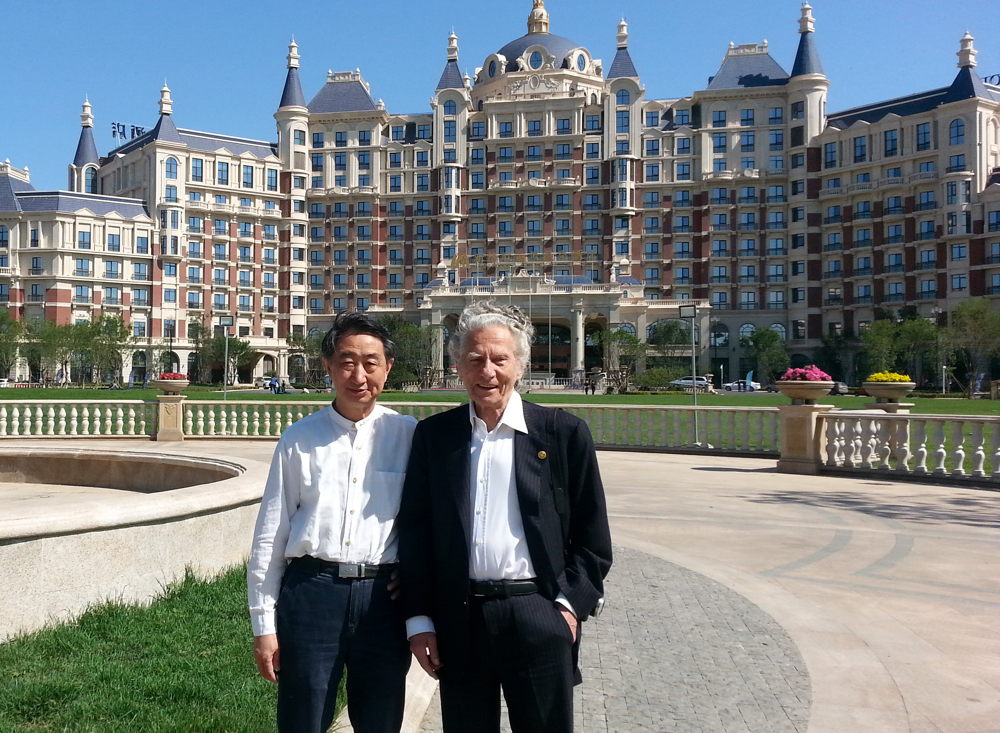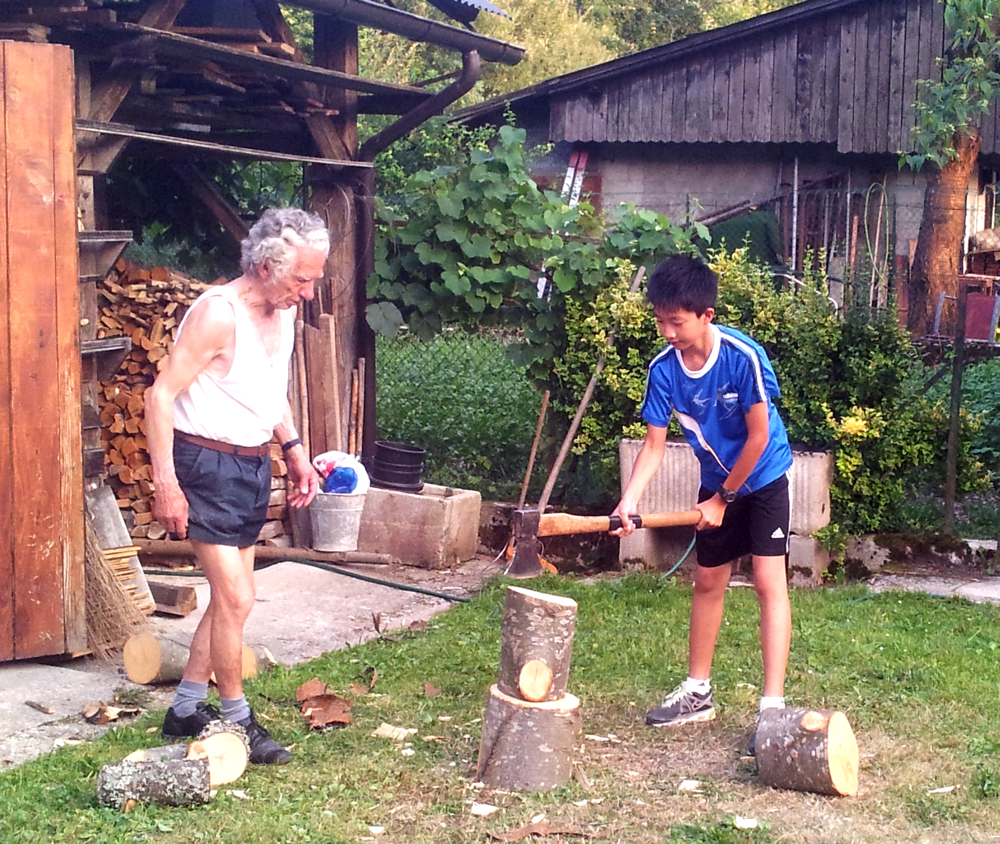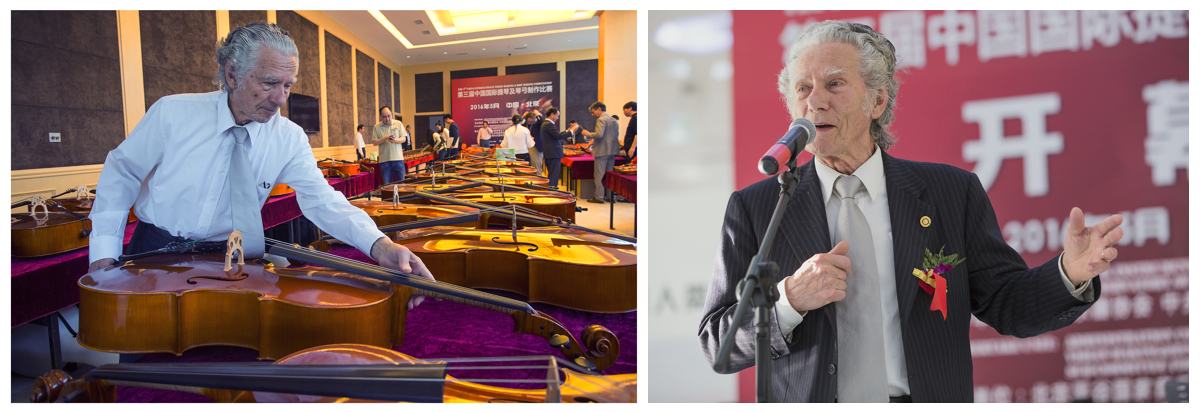The sudden death of the master violin maker and our beloved teacher Gio Batta Morassi on 27 February shocked and saddened the world’s violin making circles and the wider music community.
Morassi was a great man. His greatness was not only due to his mastery of the violin making art, but because he pushed his skills to a new height. He played a vital role in restructuring modern Italian violin making and had a far-reaching influence on the industry across the world.

Zheng Quan and Gio Batta Morassi in Beijing, May 2016
Morassi was born in the small town of Cedarchis in Udine province on July 2, 1934. In 1951 he was offered a stipend to study at the Scuola Internazionale di Liuteria di Cremona (I.P.I.A.L.L.) under the guidance of the Hungarian teacher Peter Tarta. After 1960 the three greatest Italian violin makers of the 20th century, Giuseppe Ornati, Ferdinando Garimberti and Simone Sacconi, came to teach at the school. Morassi started learning from them and worked hard by himself. By doing so, he gradually became one of the world’s top violin makers and created his own unique style. His outstanding talent brought him six gold medals in different competitions.
Morassi made a significant contribution to the revival of Cremona’s modern violin making. Many Italian makers, including Giorgio Scolari, Primo Pistoni, Nicola Lazzari, Lorenzo Marchi, Stefano Conia, Corrado Belli, Riccard Bergonzi, Bruce Carlson and his own son Simeone Morassi, were his students. And today many younger violin makers who were taught by Morassi’s students are becoming the pillars of the modern Cremona school. From this perspective, Morassi is undoubtedly the godfather of the modern Italian Cremona school.

Morassi with Kaida Zheng, son of Zheng Quan, in 2013
Morassi’s contribution to violin making extended to the international community. His students came from all over the world, such as Pierre Barthel from France, Gao Tongtong, Lu Xiang and myself from China, Juri Pociekin from Russia, Lukyo Ozaky and Takao Iwai from Japan. Through these students, he introduced the art of Italian violin making to the world and raised the level of international violin making. Morassi was also the judge of various international competitions, through which he advised many young violin makers.
I learned about Morassi’s love of nature… We used to hike in the mountains, picking mushrooms, fishing, chopping wood, chatting and drinking
I was fortunate enough to study in Morassi’s studio for three years from 1985 to 1988. There, I listened to the master’s teachings and received guidance from him about the art of violin making. However, I learned from Morassi not only how to make a violin, but also about his attitude to life and to people – for instance, his love of nature, especially of the mountains. We used to hike in the mountains, picking mushrooms, fishing, chopping wood, chatting and drinking. In the studio there were often various visitors dropping by. He always took good care of his guests. For young students who came to him, he always patiently advised them how to improve their work and gave them encouragement. I never saw him reject any one of the young students who came to him.

Morassi at the China International Violin Making Competition in Beijing, 2016
Morassi came to China many times for exhibitions and seminars, and he made a great contribution to the improvement of Chinese violin making. In 2010 we organized the China International Violin Making Competition and from the very beginning we worked together to plan the program, and Morassi volunteered to serve as the judge. In the second and third competitions he worked tirelessly as honorary chairman to guide our work. When EILA (the International Association of Violin and Bow Makers) held a plenary session in Beijing in 2017, he was in hospital for treatment. Over the phone, he asked me to say hello to all his friends in EILA and said that he would come back to Beijing in 2019. I did not dream that this phone call would be our last.
The master has left us, but the masterpieces that are his legacy will continue to sing across the world for many years to come. His faith, love and art are still alive in our hearts and minds, and will be passed to our students from generation to generation.
Zheng Quan is Director of the Violin Making Centre at the Central Conservatory of Music in Beijing and has won 20 medals in various international violin making competitions.
Read one of Morassi’s last interviews, published in February 2017.